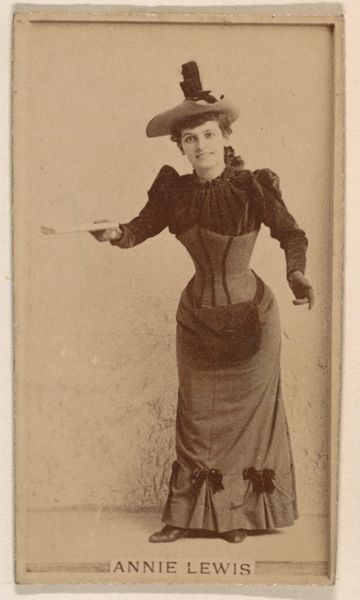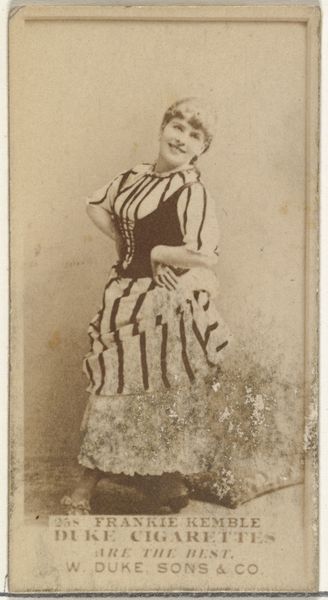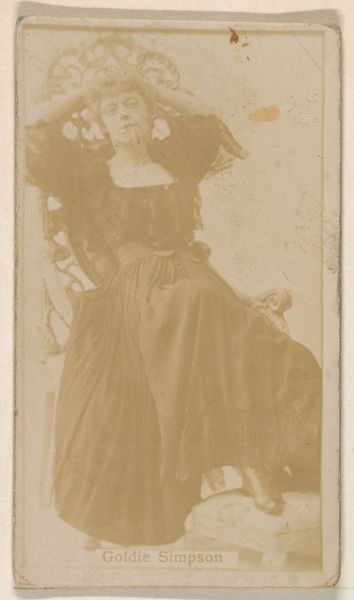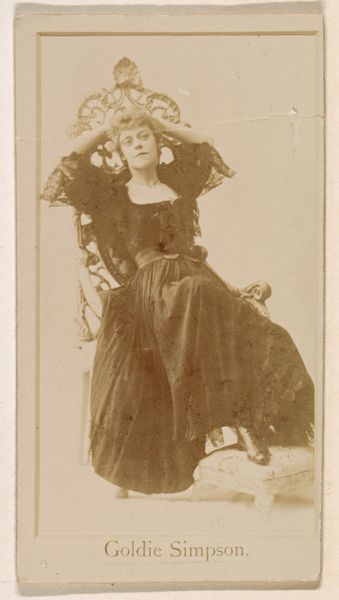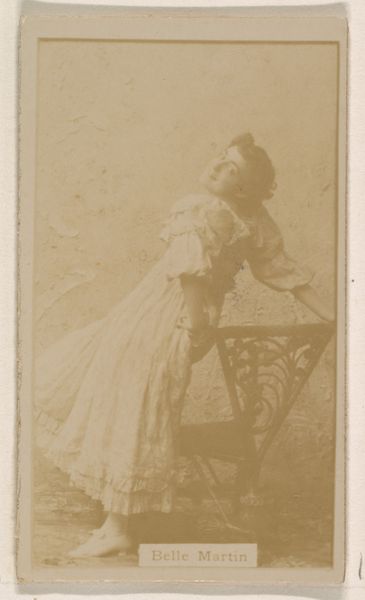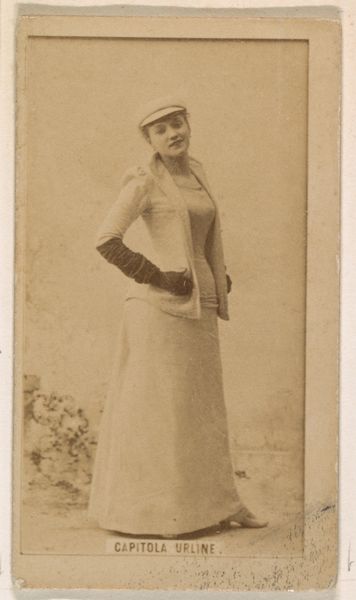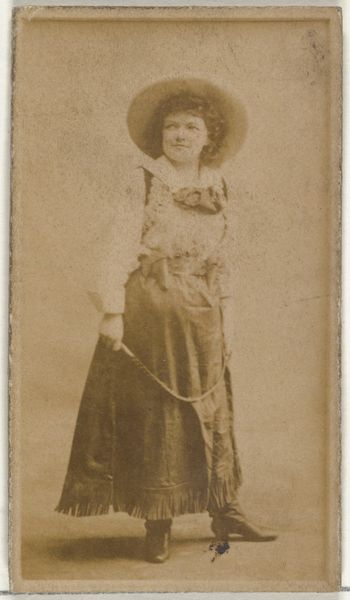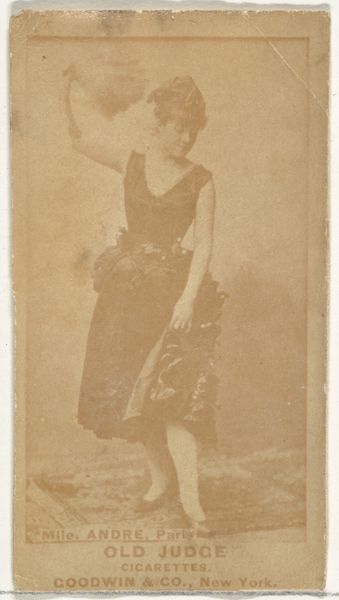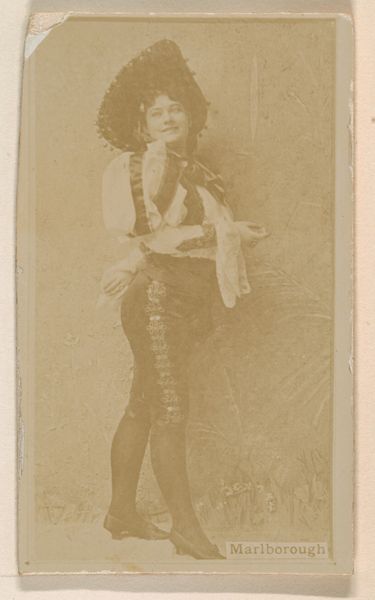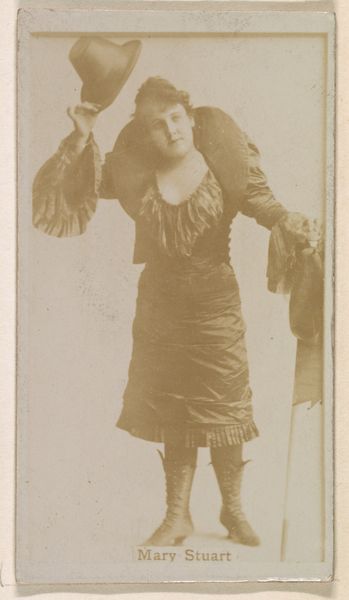
Miss Robinson, from the Actresses series (N245) issued by Kinney Brothers to promote Sweet Caporal Cigarettes 1890
0:00
0:00
print, photography
#
portrait
#
pictorialism
# print
#
photography
#
genre-painting
Dimensions: Sheet: 2 1/2 × 1 7/16 in. (6.4 × 3.7 cm)
Copyright: Public Domain
Curator: The photo print before us is titled “Miss Robinson, from the Actresses series,” and it was produced by the Kinney Brothers Tobacco Company circa 1890 as a promotional item for Sweet Caporal Cigarettes. Editor: My first impression is of a studied elegance, a moment of carefully constructed leisure captured in sepia tones. I notice the sharp waistline against the soft curves of her posture. The photographic process itself feels integral to this aura. Curator: Absolutely. The figure of Miss Robinson projects a certain image of the feminine ideal of the time. The upward tilt of her chin and half-smile suggests a woman who’s admired, desired. The actresses series like this were popular trade cards, with images of famous or well-known actresses used for a kind of semiotic shorthand for desirable female attributes. It carries the symbolism of sophistication and public recognition. Editor: What’s really intriguing to me is how this bridges commercial strategy with artistic aspiration. On one hand, these tobacco cards become a way to disseminate idealized images, a very efficient piece of capitalism if you will, shaping tastes and promoting lifestyles. The material conditions that make possible a mass consumption of both images and commodities is laid bare, or should I say “processed.” It forces one to acknowledge the intertwined nature of image production and consumption. Curator: I see your point entirely. It also speaks volumes about what photography, a fairly recent invention at the time, represented culturally: access to a form of immortality. To have your likeness preserved and multiplied in this way added significantly to the cultural weight of figures like Miss Robinson. Each item given away also represented the cultural aspirations and ideals that circulated through popular media at the time, in a way cementing the value of an actress for public consideration and, as you pointed out, purchase and consumption. Editor: I keep returning to the idea of image making as a kind of production, tied to industry and the generation of consumer desire. I look at the soft, almost hazy photographic quality, not usually what you associate with such items now, and realize how deeply this photograph is embedded in systems of commodity culture. Curator: Seeing this picture as more than a snapshot in time helps connect with the cultural expectations placed on public figures and commodities. Editor: Yes, thinking about how photography, like all material things, becomes a medium that encodes broader societal values.
Comments
No comments
Be the first to comment and join the conversation on the ultimate creative platform.
